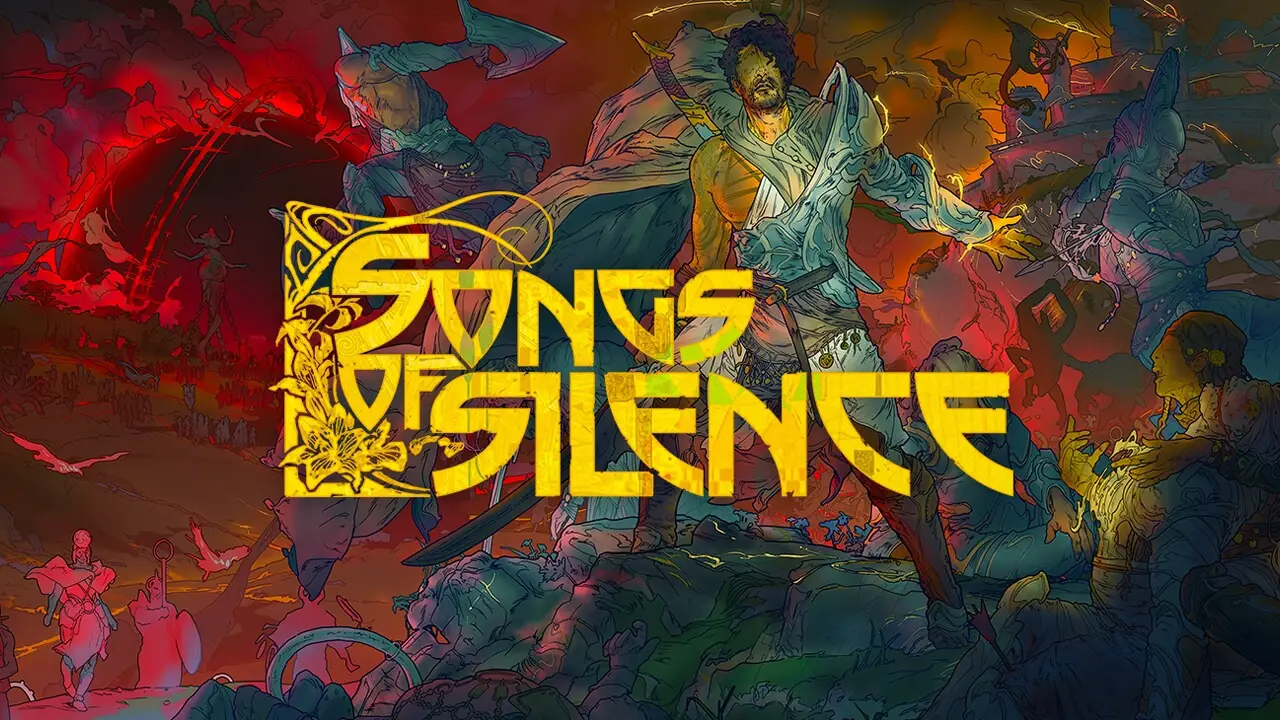On your smartphone, an autobattler is a miserable pile of bad game monetization practices. But in the sacred land of PC gaming, it can be so much more. For example, in Songs of Silence, it is the fittingly-sparse combat system of a fairly minimalist TBS game. Or, if we reached for a tired analogy, it’s a Heroes of Might and Magic autobattler!
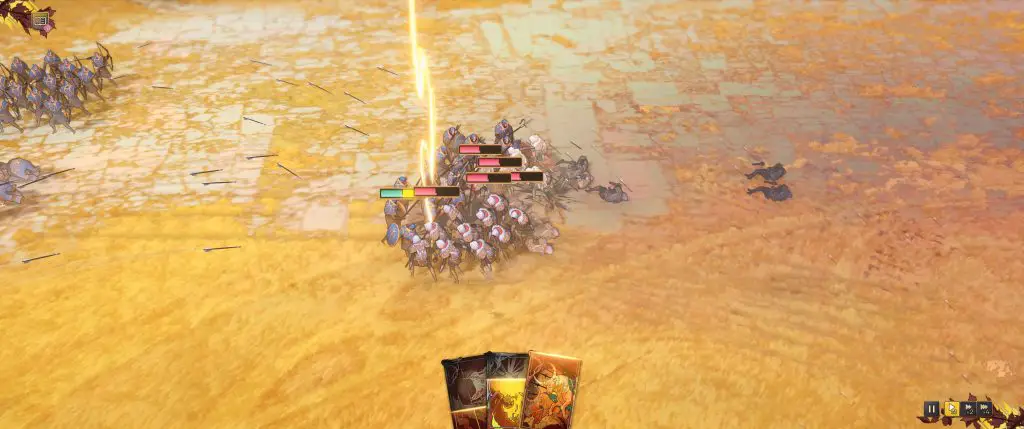
In Songs of Silence Review, we are going to cover:
- The Art of Automatic War
- This war will actually fight itself
- Explore the world personally
- There’s fifty gold on the double guitar
- Speaking technically…
In Songs of Silence, a song – the Hymn – created the world, the beasts and the humans on it. The Celestial good liked the tune and gave the latter eyes, which was not an un-controversial action. Some wars later, the Celestial-worshiping Starborn live in the world of Sonnan while the Eyless/Old Race have retreated to a much darker Irdhan.
Fast forward to this day: the Crusade, their monstrous Purgatories and the Silence that follows in their wake have swallowed the kingdom of Ehrengard. Freshly-crowned queen Lorelei leads the survivors in search for a new home, not knowing just how far this will take her.
The Art of Automatic War
At the core, Songs of Silence is fairly simple. You push your armies around on the world map, taking settlements and using them to bolster your economy and recruit more troops. Settlements have different specializations and resource income rates.
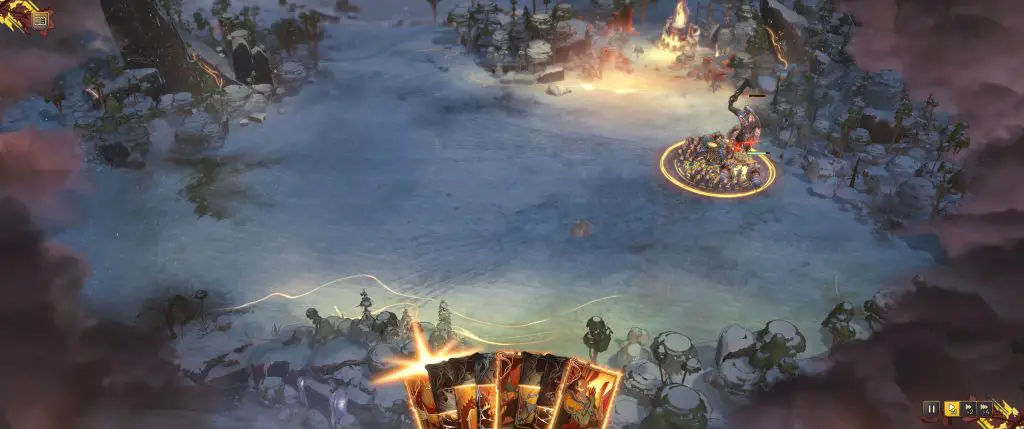
But the specializations mostly matter in whether the town has walls and can generate a garrison, while the factions only use three resources: gold for recruitment, materials (mostly) for building and then a specific flavor of magic. Oh, and each settlement can only host a single building, the availability of which depends on the types your heroes unlocked while leveling up.
As a system, it’s simpler than anything you’ve ever seen in a 4X or a TBS. Units are similarly stripped down: at their base, they have HP – you know what it does – and power, which determines both offensive and defensive skill. Traits determine everything else – a unit with Armor has a chance to avoid all damage, Annihilate lets them deal more than 1 damage per hit, and so on.
Imagine playing Total War, but instead of 20 stats you can hardly care about, there were two, and the unit traits handled the rest. It’s actually a far superior system, giving you more depth than whatever Civilization is doing these days without burying you under meaningless stat lines of post-Empire Total Wars.
This war will actually fight itself
You’re also free of TW-like micro because the game is, as mentioned, an autobattler. What you can do is rearrange your forces before attacking the enemy army. Is their right flank full of monsters that heal by eating infantry? Put cavalry to oppose them. Enemy front stiffened with monsters and Konstrukts? Maybe you have some units with appropriate Slayer traits to deal with them.
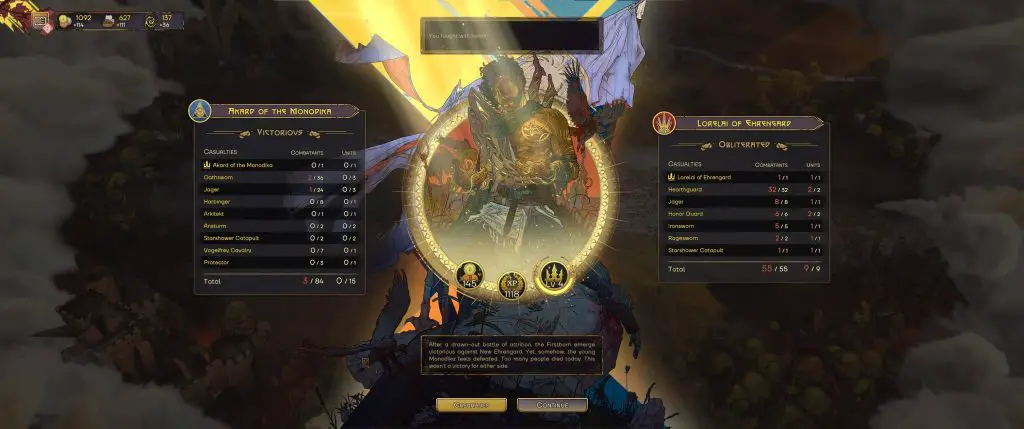
It’s like a simpler version of something every Dominions player is used to, albeit so user-friendly that all of them will be alienated. But there’s also the fact that Songs of Silence is not a pure autobattler.
That’s because heroes have (and unlock more when leveling up) cards: strategic ones are played on the world map to boost armies, build structures, and maybe even recruit units. Tactical cards are used on the battlefield. They range from simple damage AoEs to ordering all the cavalry units to turbo-charge a location. The cards are key to winning any fight that is even remotely fair.
For example, Lorelei’s Divine Spark heals and revives troops, something that would be valuable in any game. But when you can’t micro your babies around, being able to put some Hearthguard on their feet can turn the tide of battle. Having the ability to do so multiple times (recharge timer permitting) is Celestial-sent.
Any soldier you revive or heal on the field is a soldier who will rejoin the ranks without the need to rest at a settlement with the all-too-rare supply feature or using your (non-free) strategic cards.
Also, considering how many battles I had to fight in the game, playing Songs of Silence without those cards would be really boring – auto resolution isn’t a thing, and even on 4X, a battle can take some time as your foot knights chase down the last fleeing archer.
Explore the world personally
Now, it can merely drag a lot, but partially due to a combination of two traits: the scenario maps (the campaign has 8) are huge, and I feel the need to explore every nook and cranny for lore and goodies. Seriously, you can probably skip at least 50% of the map and still win, accidentally giving yourself good replayability value.
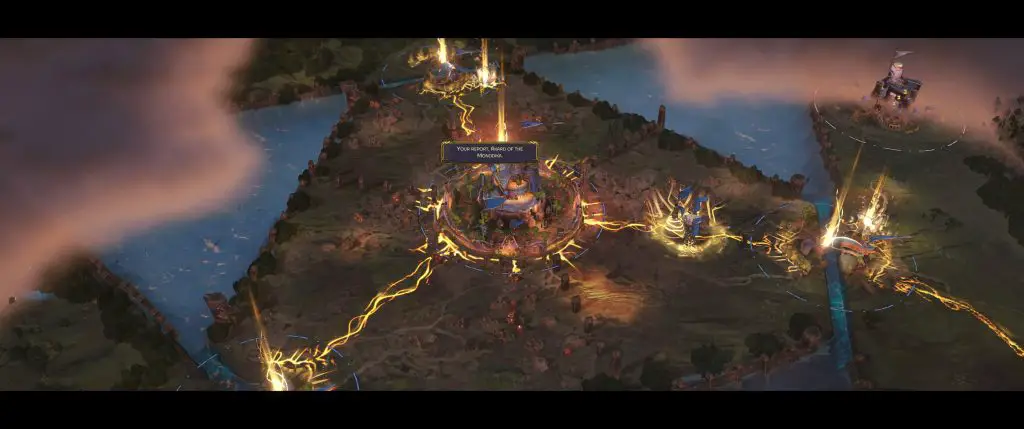
Me? I leave no stone unturned in RPGs, and Songs of Silence allows you to indulge. Off the beaten path, you’ll discover settlements, lore, artifacts, and more. Along the way, you may break the game a little, too!
Certain units have a chance to spawn more units turn by turn. It takes too long, and even a wandering neutral army can become monstrous. One time, I let an enemy capital grow too strong for me to take with three armies.
On the other hand, Songs of Silence is not ready to handle me buying every unit in every settlement every turn. I brought the inhuman logic of industrial total war to the world of Sonnan and crushed the previously-mentioned overdefended enemy citadel under wave after bloody wave of bodies.
Notably, this isn’t as overpowered as it would be in, say, Total War. You have a very limited roster of heroes (mostly up to 3 in the campaign), and troops refuse to venture anywhere without them. There’s no way to pull units from your empire into a single spot without tasking a hero to run around, and you can only recruit a single copy of any unit a settlement offers per turn. True, the settlements have garrisons, but they can get overcrowded fast.
There’s fifty gold on the double guitar
Now, recruitment and units. Of the three factions, The Thousand Kingdoms have it the easiest. You just recruit them, and that’s the finished product. The Old Race, however, has it the hardest. Not only do they have to connect all their settlements into a network (so deep raids to grab towns are less useful to them while being more important for their opponents), but their non-Konstruct units are basically all Pokemon digivolved out of Firstborn Civilians.
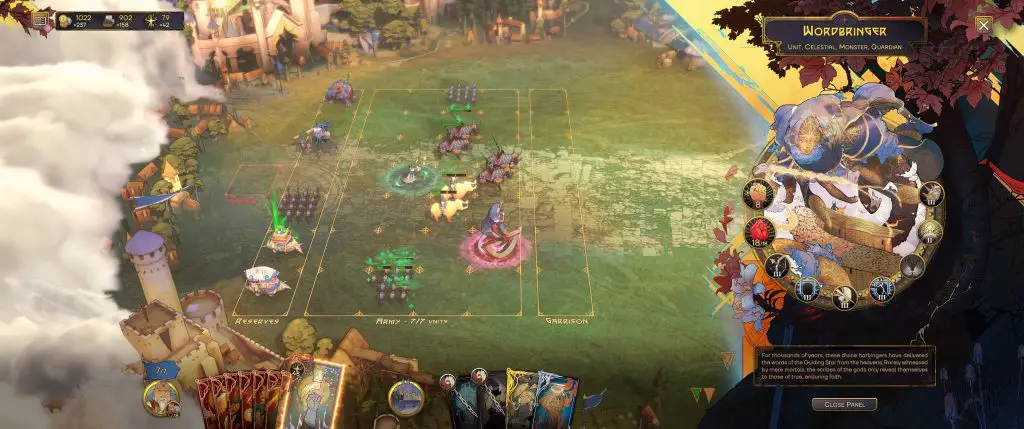
So it’s 60 gold to recruit a unit of civvies who can throw radishes or something at the enemy. Not great. You can pay 70 more to turn them into Warriors, which I’ve never found to be a satisfactory unit. You’re already 130 gold in the tank. But don’t worry, you can then pay even more to turn them into monster-slaying Garants (which I found to like Warriors, if they moved and died faster), better-armored Pridefuls or stompy Lorekeepers. You may have also needed to visit three different towns to pull that off.
Meanwhile, a Thousand Kingdoms general rocks up to a city and hires a unit of Hearthguard for 50 and Rangers for 80. For the same price as one unit of Warriors, you already have the smallest combined arms force possible. It will shoot up the plodding Warriors before they can even shake a sword at a Hearthguard.
At the same time, a Crusade leader may be spawning Thralls via their class feature or by taking a short trip back to their Purgatory, which they have upgraded to recruit Thralls for free. They can then use their magical resource to transform the free drooling mob of cultists into one of three good varieties of units.
So when playing skirmish (or multiplayer, I guess), better start with an Old Race hero that can spawn better troops than just Warriors, or you’re in deep trouble. Incidentally, this trick won’t work in the campaign. The first Eyeless mission will be a trip – the highest difficulty spike in what had thus far been a great gradual introduction to all the features of the game.
Speaking technically…
Stepping away from gameplay, I’ll say that Songs of Silence is a beautiful game. The 3D visuals do an OK job – you won’t find any bottomfeeders on YouTube making 4K RTX videos of the game – but they’re up to the task. The real joy is in the lavish, “Art Nouveau-inspired” 2D illustrations – unit portraits and location features. It’s not just vibrant and colorful but striking as well – from clearly communicated emotions in the small tableaus for the units to the cold serenity of the Celestial units to the sinister purple aura and dry bones of the undead Gestalt. The cards are more minimalist than that, but they’re pretty none-the-less.
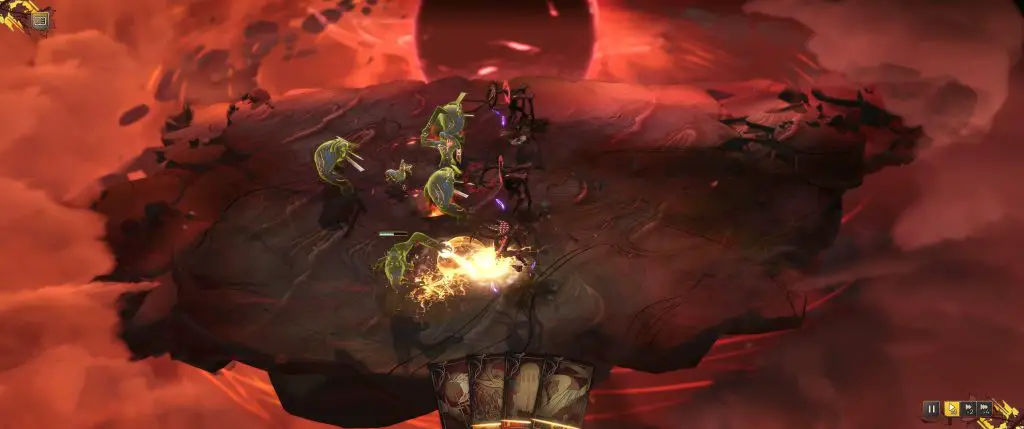
The writing is fairly good, too. First off, for a game seemingly developed in Germany, it doesn’t feature the awkward and weird language often plaguing games without AAA backing. The only two times where the characters sound unnatural come from villains communicating their doom by nearly mentioning gameplay elements. I don’t know why it was felt that such a blunt explanation of what happened was necessary. Outside of that, both the writing and dialogue flow wonderfully.
And would you believe that the dialogues are fully voice-acted? That’s a rare feature in smaller games like this. However, Songs of Silence managed it, matching the scripts of competent writers with voice actors who know their trade. They also know how to spread out the good stuff – the game doesn’t feature that many long conversations, more often opting for characters to share a few quips each turn or so.
In conclusion, Songs of Silence is the wintery surprise coming from the least expected corner – autobattlers. Perhaps they have the right to exist? Well, if the epilogue of the game is to be believed, the developers say “yes” – we can definitely expect DLCs or sequels!

